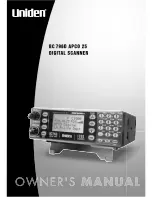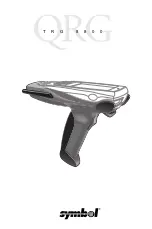
en | 6 | User guide |
OBD 2220
Info Scan
580000 | REV. A | 04.2017
Bosch Automotive Service Solutions Inc.
WARNING
Risk of poisoning.
•
Use this scan tool in locations with
mechanical ventilation providing at
least 4 air changes per hour. Engine
exhaust contains odorless gas which
can be lethal.
•
Route the exhaust outside while
testing with the engine running.
Poisoning can result in death or serious injury.
WARNING
Battery acid is a highly corrosive sulfuric acid.
•
Safety goggles and protective gloves must be
worn by the operator and any bystanders.
–
Even if your everyday glasses
have impact resistant lenses, they
are NOT safety glasses, and may
not provide adequate protection.
•
Make sure someone can hear you or is
close enough to provide aid when
working near a battery.
•
Have plenty of fresh water and soap nearby.
–
If battery acid contacts skin,
clothing, or eyes, flush exposed
area with soap and water for 10
minutes. Seek medical help.
•
Do not touch eyes while working near battery.
Battery acid can burn eyes and skin.
WARNING
Risk of fire.
•
Safety goggles and protective clothing must
be worn by the operator and any bystanders.
–
Even if your everyday glasses
have impact resistant lenses, they
are NOT safety glasses, and may
not provide adequate protection.
•
Do not position your head directly in
front of or over the throttle body.
•
Do not pour gasoline down the throt-
tle body when cranking or running the
engine, when working with fuel deliv-
ery systems or any open fuel line.
–
Engine backfire can occur when
the air cleaner is out of position.
•
Do not use fuel injector cleaning solvents
when performing diagnostic testing.
•
Keep cigarettes, sparks, open flame
and other sources of ignition away
from vehicle.
•
Keep a dry chemical (Class B) fire
extinguisher rated for gasoline, chemi-
cal and electrical fires in work area.
Fire can cause death or serious injury.
WARNING
Risk of flying particles.
•
Safety goggles and protective gloves must
be worn by the operator and any bystand-
ers while using electrical equipment.
–
Electrical equipment or rotating
engine parts can cause flying particles.
–
Even if your everyday glasses
have impact resistant lenses, they
are NOT safety glasses, and may
not provide adequate protection.
Flying particles can cause eye injury.
WARNING
Risk of burns.
•
Batteries can produce a short-circuit
current high enough to weld jewelry
to metal.
–
Remove jewelry such as rings,
bracelets and watches before
working near batteries.
Short circuits can cause injury.
WARNING
Risk of burns.
•
Do not remove radiator cap unless
engine is cold.
–
Pressurized engine coolant may
be hot.
•
Do not touch hot exhaust systems, mani-
folds, engines, radiators, sample probe.
•
Wear insulated gloves when handling
hot engine components.
•
Tester leads can become hot after extended
testing in close proximity to manifolds.
Hot components can cause injury.
WARNING
Risk of expelling fuel, oil vapors, hot steam,
hot toxic exhaust gases, acid, refrigerant
and other debris.
•
Safety goggles and protective clothing
must be worn by the operator and any
bystanders.
–
Even if your everyday glasses
have impact resistant lenses, they
are NOT safety glasses, and may
not provide adequate protection.
•
Engine systems can malfunction,
expelling fuel, oil vapors, hot steam,
hot toxic exhaust gases, acid, refriger-
ant and other debris.
Fuel, oil vapors, hot steam, hot toxic
exhaust gases, acid, refrigerant and other
debris can cause serious injury.







































